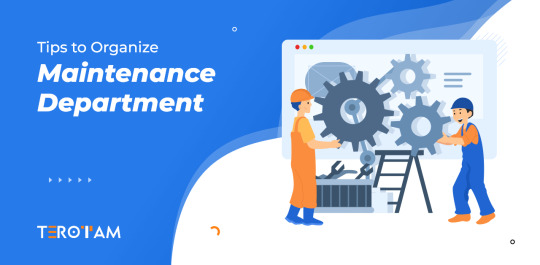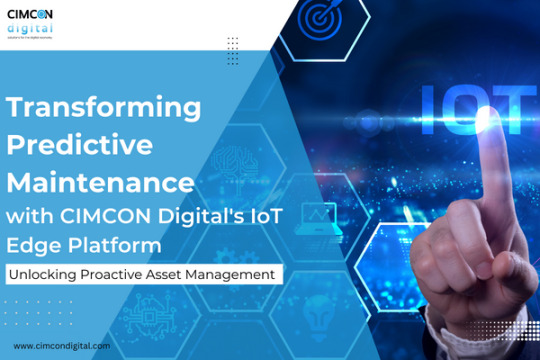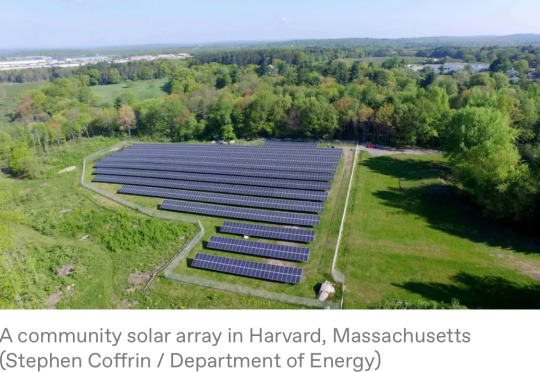#Data-driven maintenance
Explore tagged Tumblr posts
Text
Predictive Maintenance Precision: Insights from AI
AI-Based Predictive Maintenance
AI-based predictive maintenance is revolutionizing industries by leveraging artificial intelligence to forecast equipment failures before they occur, thereby minimizing downtime, reducing costs, and enhancing operational efficiency. In this article, we delve into the significance, workings, benefits, challenges, and future prospects of AI-based predictive maintenance.
Discover how AI-based predictive maintenance is revolutionizing industries by leveraging artificial intelligence to forecast equipment failures and optimize maintenance strategies.
1. Introduction to AI-Based Predictive Maintenance
Predictive maintenance involves the use of data and analytics to predict when equipment failure is likely to occur, allowing for timely maintenance and preventing unexpected breakdowns. With the integration of artificial intelligence (AI), predictive maintenance has become more accurate, efficient, and cost-effective.
2. Importance of Predictive Maintenance in Industries
Industries across various sectors rely on machinery and equipment to maintain productivity and meet customer demands. Unexpected equipment failures can lead to costly downtime, reduced output, and compromised safety. Predictive maintenance helps mitigate these risks by enabling proactive maintenance actions based on data-driven insights.
3. Understanding AI in Predictive Maintenance
How AI Revolutionizes Predictive Maintenance
AI algorithms analyze historical data patterns and real-time sensor data to predict equipment failures with high accuracy. These algorithms continually learn and adapt, improving prediction accuracy over time.
Applications of AI in Predictive Maintenance
AI is applied in various predictive maintenance tasks, including anomaly detection, fault diagnosis, remaining useful life prediction, and scheduling maintenance activities based on equipment condition and workload.
4. Key Components of AI-Based Predictive Maintenance Systems
Data Collection and Monitoring
Data from sensors, IoT devices, and equipment logs are collected and monitored in real-time to identify abnormalities and patterns indicative of potential failures.
Machine Learning Algorithms
Machine learning algorithms process the collected data to identify correlations, trends, and anomalies, enabling predictive modeling and decision-making.
Predictive Analytics
Predictive analytics techniques, such as regression analysis and time-series forecasting, are used to predict equipment failures and prescribe optimal maintenance actions.
5. Benefits of AI-Based Predictive Maintenance
Cost Savings
By preventing unplanned downtime and minimizing maintenance costs, AI-based predictive maintenance helps organizations save money and optimize resource allocation.
Increased Equipment Reliability
Regular maintenance based on predictive insights enhances equipment reliability, prolongs asset lifespan, and improves overall operational efficiency.
Enhanced Safety
Proactive maintenance reduces the risk of equipment failures and associated safety hazards, creating a safer work environment for employees.
6. Challenges and Limitations of AI in Predictive Maintenance
Data Quality and Availability
The effectiveness of AI-based predictive maintenance relies on the quality and availability of data. Incomplete or inaccurate data can lead to unreliable predictions and false alarms.
Implementation Costs
Initial investments in AI infrastructure, sensors, and data management systems may pose financial challenges for organizations, especially small and medium-sized enterprises.
Integration with Existing Systems
Integrating AI-based predictive maintenance systems with existing equipment and enterprise software requires careful planning and coordination to ensure compatibility and seamless operation.
7. Case Studies Highlighting Successful AI-Based Predictive Maintenance Implementations
Several industries, including manufacturing, healthcare, transportation, and energy, have successfully implemented AI-based predictive maintenance solutions, resulting in improved asset performance, reduced maintenance costs, and increased operational efficiency.
8. Future Trends and Innovations in AI-Based Predictive Maintenance
The future of AI-based predictive maintenance holds exciting possibilities, including advancements in predictive algorithms, integration with emerging technologies like edge computing and 5G, and the development of predictive maintenance-as-a-service offerings.
9. Conclusion
In conclusion, AI-based predictive maintenance offers a proactive approach to equipment maintenance, enabling organizations to optimize asset performance, reduce downtime, and enhance operational efficiency. While challenges exist, the benefits of AI in predictive maintenance far outweigh the costs, paving the way for a more reliable and sustainable future.
FAQs
What industries benefit most from AI-based predictive maintenance?
How does AI improve the accuracy of predictive maintenance?
What are the primary challenges in implementing AI-based predictive maintenance?
Can small businesses afford AI-based predictive maintenance solutions?
What role does data quality play in the effectiveness of predictive maintenance systems?
#AI-based maintenance#Predictive analytics#Machine learning in maintenance#Equipment reliability#Predictive maintenance benefits#Industrial automation#Data-driven maintenance#Proactive maintenance strategies#Predictive maintenance implementation#IoT sensors in maintenance
0 notes
Text
Industry 4.0: Powering the Next Industrial Revolution with Intelligence, Connectivity, and Automation
The world is undergoing a radical transformation. As we move deeper into the 21st century, the fusion of digital, physical, and biological systems is reshaping how we manufacture, operate, and innovate. This revolution has a name: Industry 4.0—the fourth industrial revolution. It represents a new era where smart technology, real-time data, automation, and interconnected networks converge to…
#5G Connectivity#Additive Manufacturing#advanced robotics#Artificial intelligence#Automation#Big Data Analytics#Blockchain#Cloud Computing#connected industry#Cyber-physical systems#data-driven operations#Digital Transformation#Digital twin#Edge computing#fourth industrial revolution#IIoT#Industrial Networking#Industry 4.0#intelligent systems#manufacturing innovation#next-gen industry#Predictive maintenance#Real-time analytics#Robotics#smart factory#Smart Grid#Smart logistics#Smart manufacturing#SolveForce#Supply Chain Visibility
0 notes
Text
Emerging Energy Technologies: Data, AI, and Digital Solutions Reshaping the Industry
The energy industry is undergoing a revolutionary transformation, driven by cutting-edge technologies that are reshaping how energy operations are managed. With advancements like autonomous robotics, AI, and real-time data analytics, these innovations are solving key challenges and setting new benchmarks for efficiency and sustainability.
Key Developments in Emerging Energy Technologies
Energy Digital Transformation is more than just a trend — it’s a necessity. The integration of advanced tools and strategies is enabling energy companies to overcome barriers, optimize processes, and unlock new possibilities for growth and sustainability. Below, we outline key developments that are shaping this transformation.
Learn more on Future of Oil & Gas in 2025: Key trends
1. Automation and Real-Time Insights
Advanced automation and real-time data solutions are transforming energy operations. These innovations are making operations safer, faster, and more efficient.
Autonomous Robotics: Tools like ANYbotics are automating inspections in hazardous environments, reducing the risk of human error.
Edge Computing: Solutions like IOTech (AcuNow) enable faster and more responsive decision-making by processing data at the edge.
Key Statistics:
The automation adoption in the energy sector is projected to increase by 15–20% in 2025.
Autonomous robotics in hazardous environments is expected to reduce inspection time by 30%.
2. Harnessing the Power of Data
Energy Data Analytics is becoming increasingly critical for energy companies. By harnessing real-time data, companies can optimize performance and make better decisions.
Digital Twin Technology: The KDI Kognitwin integrates with AcuSeven to offer predictive maintenance and improve operational efficiency.
Data Analytics: Platforms like Databricks, AcuPrism enable real-time data analysis to drive better decision-making.
Key Statistics:
Energy sector spending on data analytics is expected to grow by 10–15% annually over the next five years.
The implementation of digital twins is expected to improve maintenance efficiency by 20–25%.
Watch the Webinar Recording
To explore these innovations in more detail, watch the recorded version of SYNERGY FOR ENERGY. Gain exclusive insights into how these trends and technologies are shaping the future of the energy sector.
Click here to watch
3. AI-Driven Energy Optimization
Artificial Intelligence is transforming how energy companies manage operations in the Energy Sector, from predictive maintenance to forecasting. AI is predicted to play a central role in optimizing energy usage and reducing costs.
Generative AI: AI-driven applications enhance forecasting, predictive maintenance, and optimization of energy consumption.
Energy Efficiency Tools: AI-based tools help organizations achieve sustainability goals by reducing waste and optimizing consumption.
Key Statistics:
AI-driven solutions are expected to account for 25–30% of energy management by 2025.
Energy efficiency tools can reduce consumption by 15% across industries.
4. Streamlining Digital Transformation
The shift to digital tools is vital for staying competitive in the fast-evolving energy industry. Digital transformation is helping companies modernize legacy systems and enhance data management.
Custom Digital Applications: Acuvate’s solutions streamline the deployment of digital tools to enhance operational efficiency.
Modernizing Legacy Systems: Solutions like Microsoft Fabric and AcuWeave simplify the migration from outdated systems, improving scalability and performance.
Read more about Top 4 Emerging Technologies Shaping Digital Transformation in 2025
Key Statistics:
Digital adoption in the energy sector is expected to increase by 20% by 2025.
The use of Microsoft Fabric has reduced migration costs by 20–30%.
Looking Ahead: Key Trends for 2025
As we are in 2025, several key trends will further influence the energy sector:
Increased Focus on Renewable Energy: The International Energy Agency predicts that over a third of global electricity will come from renewable sources.
AI’s Growing Demand: The computational needs of AI will significantly drive electricity demand, necessitating a focus on sustainable energy sources.
Nuclear Energy Renaissance: A renewed societal acceptance of nuclear power as part of the energy transition is gaining momentum.
Continued R&D Investment: Ongoing investments in research and development will spur innovation across clean energy technologies.
Conclusion
The ongoing transformation within the energy sector underscores the critical role of innovation in driving efficiency and sustainability. As automation, data analytics, AI, and digital transformation continue to evolve, they will collectively shape a more resilient and environmentally friendly energy landscape. Engaging with these advancements through initiatives like webinars and industry reports will provide valuable insights into navigating this dynamic environment effectively.
For More Insightful Webinars
For more insightful webinars like SYNERGY FOR ENERGY, visit our website. We host a variety of sessions designed to provide in-depth insights into the latest innovations shaping industries worldwide. Stay informed and explore the future of technology and business.
Check out our upcoming webinars here.
#autonomous robots#Advanced automation#real-time data solutions#data analytics#generative ai#Artificial Intelligence#AI-driven applications#Microsoft Fabric#Digital transformation#predictive maintenance
0 notes
Text
IoT in Action: Transforming Industries with Intelligent Connectivity

The Power of Connectivity
The Internet of Things (IoT) has become a cornerstone of innovation, as it reimagines industries and redefines the way business is conducted. In bridging the physical and digital worlds, IoT enables seamless connectivity, smarter decision-making, and unprecedented efficiency. Today, in the competitive landscape, intelligent connectivity is no longer just a technology advancement; for businesses wanting to be relevant and continue to thrive, it is now a strategic imperative.
IoT is not simply about connecting devices; it’s about creating ecosystems that work collaboratively to drive value. With industries relying heavily on real-time data and actionable insights, IoT-powered connectivity has become the backbone of operational excellence and growth. Let’s explore how this transformative technology is revolutionizing key sectors, with a focus on how businesses can leverage it effectively.
Applications of IoT in Key Industries
1.Smart Manufacturing: Efficiency Through Connectivity
Manufacturing has embraced IoT as a tool to streamline operations and boost productivity. By embedding sensors in machinery and integrating real-time monitoring systems, manufacturers can:
Predict and Prevent Downtime: IoT-enabled predictive maintenance reduces unplanned outages, saving time and money.
Optimize Resource Allocation: Smart systems track inventory, raw materials, and energy consumption, ensuring optimal usage.
Enhance Quality Control: Real-time data from production lines helps identify defects early, maintaining high-quality standards.
Example: A global automotive manufacturer integrated IoT sensors into its assembly lines, reducing equipment downtime by 25% and improving production efficiency by 30%. The ability to monitor machinery health in real time transformed their operations, delivering significant cost savings.
2.Healthcare: Improve Patient Outcomes
In healthcare, IoT has been a game-changer in enabling connected medical devices and systems that enhance patient care and operational efficiency. The main applications include:
Remote Patient Monitoring: Devices track vital signs in real time, allowing healthcare providers to offer timely interventions.
Smart Hospital Systems: IoT-enabled equipment and sensors optimize resource utilization, from patient beds to medical supplies.
Data-Driven Decisions: IoT integrates patient data across systems, providing actionable insights for personalized treatment plans.
Example: A major hospital has put into operation IoT-enabled wearables for chronic disease management. This solution reduced the number of readmissions to hospitals by 20% and empowered patients to take an active role in their health.
3.Retail: Revolutionizing Customer Experiences
IoT is revolutionizing retail through increased customer interaction and streamlined operations. Connected devices and smart analytics allow retailers to:
Personalize Shopping Experiences: IoT systems track customer preferences, offering tailored recommendations in real time.
Improve Inventory Management: Smart shelves and sensors keep stock levels optimal, reducing wastage and improving availability.
Enable Smooth Transactions: IoT-driven payment systems make checkout easier and much faster, increasing customers’ convenience
Example: A retail chain leveraged IoT to integrate smart shelves that automatically update inventory data. This reduced out-of-stock situations by 40%, improving customer satisfaction and driving higher sales.
Role of Intelligent Connectivity in Business Transformation
Intelligent connectivity lies at the heart of IoT’s transformative potential. By connecting devices, systems, and processes, businesses can:
Accelerate Decision-Making: Real-time data sharing enables faster, more informed decisions, giving companies a competitive edge.
It increases collaboration by allowing smooth communication between departments and teams, making the entire system more efficient.
Adapt to Market Dynamics: IoT enables companies to respond quickly to changes in demand, supply chain disruptions, or operational challenges.
Intelligent connectivity is not just about technology; it’s about creating value by aligning IoT solutions with business objectives. This strategic approach guarantees that IoT investments will deliver measurable outcomes, from cost savings to improved customer loyalty.
How Tudip Technologies Powers Intelligent Connectivity
Tudip Technologies specializes in designing and implementing IoT solutions that drive meaningful transformation for businesses. With a focus on innovation and collaboration, Tudip ensures that its clients achieve operational excellence through intelligent connectivity.
Tailored Solution for Every Business Industry
Tudip understands that no two businesses are alike. By customizing IoT strategies to address specific challenges, Tudip helps clients unlock the full potential of connectivity. Examples include:
Smart Supply Chains: Implementing IoT systems that provide real-time visibility into inventory and logistics, reducing delays and improving efficiency.
Energy Management: Developing IoT frameworks to monitor and optimize energy usage, driving sustainability and cost savings.
Healthcare Innovations: Designing networked medical devices that allow remote patient monitoring and data integration without a hitch.
The Future of Connected Systems
The demand for intelligent connectivity will keep increasing as the industries continue to evolve. Emerging trends in IoT include edge computing, 5G networks, and AI-powered analytics, which promise to redefine possibilities for connected ecosystems.
Businesses that embrace these advancements stand to gain:
Greater Resilience: IoT enables adaptive systems that can withstand market fluctuations and operational challenges.
Enhanced Innovation: Connected technologies open doors to new business models, revenue streams, and customer experiences.
Sustainable Growth: IoT optimizes resources and processes, contributing to long-term environmental and economic sustainability.
The future belongs to those who see connectivity not just as a technological tool but as a strategic enabler of transformation. The right partner will help businesses transform IoT from a concept into a competitive advantage.
Conclusion: Embracing Intelligent Connectivity with Tudip
IoT is not just changing the way businesses operate—it’s redefining what’s possible. From manufacturing and healthcare to retail and beyond, intelligent connectivity is driving innovation, efficiency, and growth across industries.
Tudip Technologies is at the forefront of this transformation, offering customized IoT solutions that deliver real results. By prioritizing collaboration, adaptability, and measurable outcomes, Tudip ensures that its clients stay ahead in an increasingly connected world.
Now is the time to embrace the power of IoT and unlock its potential for your business. With Tudip as your partner, the journey to intelligent connectivity is not just achievable—it’s inevitable.
Click the link below to learn more about the blog IoT in Action: Transforming Industries with Intelligent Connectivity https://tudip.com/blog-post/iot-in-action-transforming-industries-with-intelligent-connectivity/
#Tudip#IoT#intelligent connectivity#real-time data#predictive maintenance#smart manufacturing#remote patient monitoring#healthcare IoT#retail IoT#smart shelves#supply chain optimization#edge computing#AI-powered analytics#5G networks#industrial IoT#connected devices#digital transformation#operational efficiency#business intelligence#automation#data-driven decision-making#IoT solutions#smart systems#enterprise IoT#IoT-powered connectivity#sustainable growth#technology innovation#machine learning#cloud computing#smart sensors
0 notes
Text
The Role of AI in Evolving Surface Radar Systems

The Surface Radars Market is experiencing a transformative shift, driven by the integration of Artificial Intelligence (AI). This evolution is enhancing the capabilities of surface radar systems, leading to improved detection, surveillance, and operational efficiency. This article explores how AI is reshaping the surface radars market, the benefits it brings, and the future implications for defense and civil applications.
Understanding Surface Radars
Surface radars are pivotal in defense and civil operations, providing high-performance detection, surveillance, and communication capabilities. They play a crucial role in real-time threat detection, border security, air defense, naval surveillance, and the protection of strategic infrastructure. The demand for advanced surface radar systems has been on the rise, driven by the need for enhanced security measures and the modernization of military capabilities.
The Role of AI in Surface Radar Systems
The integration of AI into surface radar systems marks a significant advancement in radar technology. AI algorithms enable the processing of vast amounts of radar data in real-time, providing immediate and meaningful insights that empower decision-making. This integration enhances object detection and classification, allowing radar systems to differentiate between various objects with greater accuracy. In defense applications, this means improved identification of potential threats, leading to more effective responses.
Download Pdf Brochure: https://www.marketsandmarkets.com/pdfdownloadNew.asp?id=244541997
Enhancing Object Detection and Classification
AI-driven radar analytics have revolutionized object detection and classification. Machine learning algorithms process extensive radar data, enabling systems to distinguish between different objects such as vehicles, aircraft, and unmanned aerial vehicles (UAVs). This capability is particularly beneficial in defense scenarios, where accurately identifying potential threats is critical. By analyzing historical and real-time data, AI can predict future movements and anticipate events, enhancing situational awareness and response strategies.
Predictive Maintenance and System Reliability
AI contributes significantly to predictive maintenance in radar systems. By analyzing operational data, AI algorithms can identify anomalies and predict potential system failures before they occur. This proactive approach ensures optimal performance and longevity of radar assets, reducing downtime and maintenance costs. For instance, AI-powered systems can monitor the health of radar components, alerting operators to issues that may require attention, thereby enhancing overall system reliability.
AI-Driven Radar Analytics in Surveillance
In surveillance applications, AI-driven radar analytics enhance the detection and tracking of objects over vast areas. This capability is vital for border security, coastal surveillance, and the protection of critical infrastructure. AI-enhanced radar systems provide real-time monitoring and accurate threat detection, enabling timely interventions and bolstering national security measures.
Integration with Unmanned Surface Vehicles (USVs)
The integration of AI-powered surface radars with Unmanned Surface Vehicles (USVs) is projected to achieve significant growth. USVs equipped with advanced radar systems benefit from enhanced detection, tracking, and surveillance functionalities. AI enables these autonomous vehicles to navigate complex maritime environments, perform critical missions such as intelligence, surveillance, and reconnaissance (ISR), mine detection, and anti-submarine warfare, thereby increasing their operational efficiency and effectiveness.
Ask For Sample Report: https://www.marketsandmarkets.com/requestsampleNew.asp?id=244541997
Challenges and Considerations
Despite the advancements, integrating AI into surface radar systems presents challenges. Ensuring the security and reliability of AI algorithms is paramount, as vulnerabilities could be exploited, leading to compromised radar operations. Additionally, the complexity of AI systems requires substantial investment in research and development, as well as specialized expertise to implement and maintain these technologies effectively.
Future Outlook
The future of the Surface Radars Market is closely tied to ongoing advancements in AI and machine learning. As AI technologies continue to evolve, we can anticipate further enhancements in radar capabilities, including improved accuracy, faster data processing, and more sophisticated predictive analytics. These developments will not only strengthen defense operations but also expand the applications of surface radars in civil sectors such as air traffic control, weather monitoring, and disaster management.
The integration of AI into the Surface Radars Market represents a significant leap forward in radar technology. By enhancing detection capabilities, enabling predictive maintenance, and improving surveillance operations, AI is set to play a pivotal role in the evolution of surface radar systems. As the demand for advanced security and surveillance solutions grows, the synergy between AI and surface radars will undoubtedly be a cornerstone in meeting these emerging challenges.
#surface radars market#ai in radar systems#data bridge market research#radar technology advancements#predictive maintenance in radars#ai-driven surveillance#unmanned surface vehicles
0 notes
Text
Uncover AI Solutions For Sustainable Energy. See How AI Enhances Renewable Resource Use, Lowers Carbon Emissions, And Promotes Global Sustainability.
#AI In The Renewable Energy#AI-Based Predictive Data Analysis#AI-Driven Predictive Analytics#Artificial Intelligence Development#Predict Energy Consumption Trends#Predictive MAIntenance#Renewable Energy Consumptions#SustAInable Energy Planning#Systematic Data Analysis#Use Of AI Applications
0 notes
Text
How to Organize Maintenance Department?

Learn key strategies for organizing your maintenance department to boost efficiency, streamline operations, and enhance team productivity.
#maintenance department#Proactive Problem Solving#Data-Driven Decision-Making#Skill-Based Task Assignment#Clear Organizational Hierarchy
0 notes
Text
Transforming Predictive Maintenance with CIMCON Digital’s IoT Edge Platform: Unlocking Proactive Asset Management

Introduction
In today’s fast-paced and technologically advanced world, the need for efficient and proactive asset management is paramount for businesses to stay competitive. CIMCON Digital’s IoT Edge Platform emerges as a game-changer in the realm of Predictive Maintenance, empowering organizations to detect anomalies in advance using ML algorithms. This capability not only enables customers to plan schedules well in advance and avoid costly downtime but also provides real-time visibility into the remaining useful life of assets. In this article, we delve into how CIMCON Digital’s IoT Edge Platform revolutionizes Predictive Maintenance with practical examples of proactive asset management.
1. The Challenge of Reactive Maintenance
Traditionally, companies have been plagued by reactive maintenance practices, where assets are repaired or replaced only after failures occur. This reactive approach leads to unexpected downtime, reduced productivity, and increased maintenance costs. Predicting asset failures and planning maintenance schedules in advance is critical to ensure smooth operations, optimize resource allocation, and minimize overall downtime.
2. Empowering Proactive Maintenance with ML Algorithms
CIMCON Digital’s IoT Edge Platform is equipped with advanced Machine Learning algorithms that analyze real-time data from connected assets and machines. By continuously monitoring sensor data and historical performance trends, the platform can accurately detect anomalies and deviations from normal operating patterns. This proactive approach allows businesses to predict potential asset failures well in advance, providing ample time to schedule maintenance activities before any critical failures occur.
3. Planning Ahead to Avoid Downtime
Imagine a scenario in a manufacturing facility where a critical piece of equipment experiences an unexpected failure. The consequences could be disastrous, leading to costly downtime and missed production targets. With CIMCON Digital’s IoT Edge Platform in place, the same equipment would be continuously monitored in real-time. As soon as the platform detects any unusual behavior or signs of potential failure, it triggers an alert to the maintenance team.
Armed with this early warning, the maintenance team can plan the necessary repairs or replacements well in advance, avoiding unplanned downtime and minimizing disruption to production schedules. This capability not only ensures smooth operations but also optimizes maintenance resources and lowers the overall maintenance costs.
4. Real-Time Visibility into Asset Health
The IoT Edge Platform goes beyond detecting anomalies; it also provides real-time insights into the remaining useful life of assets. By analyzing historical performance data and asset health indicators, the platform estimates the remaining operational life of an asset with high accuracy.
Consider a scenario in a utility company managing a fleet of aging turbines. The maintenance team needs to know the remaining useful life of each turbine to plan proactive maintenance and avoid sudden breakdowns. With CIMCON Digital’s IoT Edge Platform, the team can access real-time information on the health of each turbine, enabling them to make data-driven decisions about maintenance schedules, parts replacement, and resource allocation.
5. Benefits of CIMCON Digital's IoT Edge Platform
CIMCON Digital’s IoT Edge Platform offers a host of benefits to businesses seeking to enhance their Predictive Maintenance capabilities:
a) Proactive Decision-making: By detecting anomalies in advance, the platform enables proactive decision-making, reducing reactive responses and enhancing overall operational efficiency.
b) Minimized Downtime: With the ability to schedule maintenance activities in advance, businesses can avoid costly downtime, leading to increased productivity and higher customer satisfaction.
c) Optimal Resource Allocation: The platform’s real-time visibility into asset health allows for better resource allocation, ensuring that maintenance efforts are targeted where they are most needed.
d) Cost Savings: By avoiding unexpected failures and optimizing maintenance schedules, businesses can significantly reduce maintenance costs and improve their bottom line.
Conclusion:
CIMCON Digital’s IoT Edge Platform empowers businesses to transcend traditional reactive maintenance practices and embrace a proactive approach to asset management. With the platform’s advanced ML algorithms, businesses can detect anomalies in advance, plan maintenance schedules proactively, and gain real-time visibility into asset health. This transformative capability results in minimized downtime, optimized resource allocation, and substantial cost savings. As CIMCON Digital’s IoT Edge Platform continues to revolutionize Predictive Maintenance, businesses can embark on a journey towards greater efficiency, productivity, and long-term sustainability.
#iot#Predictive Maintenance#Asset Management#IoT Edge Platform#Proactive Maintenance#ML Algorithms#Anomaly Detection#Resource Allocation#Real-time Visibility#Downtime Reduction#Cost Savings#Asset Health#CIMCON Digital#Reactive Maintenance#Operational Efficiency#Business Sustainability#Maintenance Scheduling#Data-driven Decisions#Production Optimization#Customer Satisfaction#Utility Company
0 notes
Text
Dandelion News - October 8-14
Like these weekly compilations? Tip me at $kaybarr1735 or check out my Dandelion Doodles on Patreon!
1. All 160 dogs at Florida shelter found homes ahead of Hurricane Milton

“[The shelter] offered crates, food and anything else the dogs would need in exchange for the animals to spend just five days with the foster parents if the human didn't want to keep them for longer. […A]fter about a day of receiving around 100 messages every 30 minutes, Bada said, all 160 were gone from the shelter and in safe and warm homes.”
2. Restoring Ecosystems and Rejuvenating Native Hawaiian Traditions in Maui

“[Volunteers] are restoring water flow to the refuge, removing invasive species, and restoring a loko iʻa kalo using ʻike kūpuna, ancestral knowledge. […] This human-made ecosystem will provide food for community members and habitat for wildlife while protecting coral reefs offshore.”
3. Solar-powered desalination system requires no extra batteries

“In contrast to other solar-driven desalination designs, the MIT system requires no extra batteries for energy storage, nor a supplemental power supply, such as from the grid. […] The system harnessed on average over 94 percent of the electrical energy generated from the system’s solar panels to produce up to 5,000 liters of water per day[….]”
4. Threatened pink sea fan coral breeds in UK aquarium for first time

“The spawning is part of University of Exeter Ph.D. student Kaila Wheatley Kornblum's research into the reproduction, larval dispersal and population connectivity of Eunicella verrucosa. […] Pink sea fans are believed to have been successfully bred by only one other institution, Lisbon Oceanarium, in 2023.”
5. Tiny 'backpacks' are being strapped to baby turtles[….]

““We analysed the data and found that hatchlings show amazingly consistent head-up orientation – despite being in the complete dark, surrounded by sand [… and] they move as if they were swimming rather than digging[…. This new observation method is] answering questions about best conservation practices,” says Dor.”
6. New California Law Protects Wildlife Connectivity

“A new state law in California will instruct counties and municipalities to conserve wildlife corridors when planning new development. […] This could entail everything from creating wildlife crossings at roads or highways, employing wildlife-safe fencing, or not developing on certain land.”
7. ‘I think, boy, I’m a part of all this’: how local heroes reforested Rio’s green heart

“By 2019, [the program] had transformed the city’s landscape, having trained 15,000 local workers like Leleco, who have planted 10m seedlings across […] roughly 10 times the area of New York’s Central Park. Reforested sites include mangroves and vegetation-covered sandbars called restinga, as well as wooded mountainsides around favelas.”
8. Alabama Town Plans to Drop Criminal Charges Over Unpaid Garbage Bills

““Suspending garbage pickup, imposing harsh late penalties and prosecuting people who through no fault of their own are unable to pay their garbage and sewage bills does not make payment suddenly forthcoming,” West said. [… The city] has agreed to drop pending criminal charges against its residents over unpaid garbage bills.”
9. New Hampshire’s low-income community solar program finally moves forward

“The state energy department is reviewing seven proposals for community solar arrays that will allocate a portion of their bill credits to low-income households. […] New Hampshire’s strategy of working with utilities to automatically enroll households that have already been identified streamlines the process.”
10. The Future Looks Bright for Electric School Buses

“EPA has awarded about $3 billion in grants from the infrastructure law, which paid to replace about 8,700 buses. Of those, about 95 percent are electric. [… Electric buses are] cheaper to operate and require less maintenance than diesel buses and will soon be at cost parity when looking at the lifetime cost of ownership[….]”
October 1-7 news here | (all credit for images and written material can be found at the source linked; I don’t claim credit for anything but curating.)
#hopepunk#good news#dogs#hurricane milton#florida#animal shelters#foster dog#hawaii#hawaiʻi#maui#solar#water#solar energy#coral#endangered species#coral reef#turtles#sea turtle#technology#wildlife#habitat#nature#california#rio#south america#reforestation#poverty#anti capitalism#solar panels#electric vehicles
200 notes
·
View notes
Text
Beyond the Buzz: How IoT Redefines Business Operations

Moving from Hype to Reality
IoT has moved from being a futuristic idea to a practical solution that businesses use daily to improve operations and achieve sustainable growth. Though much of the discussion around IoT is about its potential, the real value that it presents is in how companies can use the technology to solve real-world problems.
Today, IoT is no longer a buzzword; it’s a necessity for any business looking to remain competitive and agile in a dynamic global environment. With its power to integrate devices, data, and processes, IoT helps businesses achieve efficiencies, improve customer satisfaction, and create new revenue streams. In this blog post, we explore how IoT is changing business operations across industries and what companies need to do to maximize its potential.
How Tudip Technologies Redefines IoT Solutions
Tudip Technologies empowers businesses with IoT solutions that tackle complex operational challenges and drive measurable outcomes.
Our Specialized Approach:
Edge Computing Integration: Enabling faster data processing closer to devices for real-time responsiveness.
IoT Ecosystem Design: Creating scalable ecosystems that adapt to changing business needs.
Sustainability-Focused Solutions: Tailoring IoT frameworks that align with environmental goals.
Example: Tudip partnered with a logistics provider to implement IoT-powered edge analytics, reducing data processing times by 60% and improving delivery accuracy across global operations.
Key Takeaways: Turning IoT Into Operational Strength
Invest in Scalable Solutions: Ensure your IoT systems can grow alongside your business needs.
Prioritize Security: Robust cybersecurity measures arToday, IoT is no longer a buzzword; it’s a necessity for any business looking to remain competitive and agile in a dynamic global environment. With its power to integrate devices, data, and processes, IoT helps businesses achieve efficiencies, improve customer satisfaction, and create new revenue streams. In this blog post, we explore how IoT is changing business operations across industries and what companies need to do to maximize its potential.
Redefining Operational Efficiency with IoT
1. Predictive Analytics: Smarter Urban Operations with IoT
IoT is revolutionizing energy management by integrating renewable energy sources into business operations. Smart systems analyze usage patterns and adjust power drawn from solar, wind, or traditional grids in real time.
Optimized Renewable Usage: IoT ensures renewable energy is used efficiently by monitoring supply-demand gaps.
Grid Stability: Balances energy loads to prevent outages during peak hours.
Sustainability Goals: Helps businesses achieve net-zero emissions by prioritizing clean energy consumption.
Example: A technology campus integrated IoT in optimizing its solar energy consumption and reduced dependence on traditional grids by 40%, with a significant reduction in operational costs
2. Energy Management: Advancing Renewable Solutions
Predictive analytics powered by IoT is transforming urban infrastructure. Cities can now monitor critical assets like bridges, roads, and utilities in real time, ensuring timely maintenance and preventing costly failures.
Public Safety: Early detection of infrastructure stress minimizes risks to citizens.
Cost Efficiency: Avoiding large-scale repairs reduces budget overruns for municipalities.
Sustainability: Proactive maintenance extends the lifespan of assets, reducing waste.
3. Automation Excellence: Better Disaster Response Logistics
IoT-driven automation is transforming how disaster response occurs—getting aid to where it is needed, faster and more efficiently.
Real-Time Inventory Management: Monitors relief inventory and ensures its proper distribution to areas of greatest need.
Smart Transportation: Optimizes routes for rescue and supply vehicles during crises.
Collaboration Across Agencies: IoT systems enable seamless communication between response teams.
Example:In a recent hurricane, one global aid organization leveraged IoT-connected drones to survey damage and automate the delivery of supplies, resulting in a 50% faster response time.
Overcoming Common IoT Challenges
1. Integration of IoT with Existing Systems
One of the biggest hurdles businesses face is integrating IoT solutions with legacy systems. Compatibility issues can hinder seamless data exchange and functionality. Solution: Use a flexible IoT platform with built-in interoperability; make sure it provides APIs for smooth integration. Careful planning and phased implementation may also reduce disruptions to a minimum.
2. Data Security and Privacy
IoT ecosystems are all about continuous data gathering and transmission, which increases exposure to cyber threats. The security of sensitive information is the foundation of trust with stakeholders.
Solution: Implement robust encryption protocols, regularly update security measures, and educate employees on cybersecurity best practices.
3. Adapting to Rapid Technological Changes
The rapid rate of innovation in IoT can make it challenging for businesses to adapt to new developments and keep their systems current. Solution: Collaborate with technology providers that offer scalable solutions and ongoing support to adapt to emerging trends without overhauling existing systems.
How IoT Drives Operational Transformation
1. Enhancing Decision-Making with Real-Time Insights
IoT provides companies with real-time data that enables informed decision-making. Whether it is revising supply chain strategies or optimizing production schedules, IoT ensures that companies can act quickly and confidently.
Dynamic Adaptability: Businesses can change their strategies according to up-to-date information and stay responsive to market demand.
Improved Collaboration: IoT systems enable better communication across departments, enabling coordinated efforts.
2. Creating Value Through Customization
IoT’s ability to collect granular data allows businesses to tailor their offerings and services to meet specific customer needs. Personalization not only enhances user experience but also builds stronger customer relationships.
e non-negotiable in today’s interconnected world.
Focus on Outcomes: Use IoT to achieve specific goals, whether it’s reducing costs, enhancing customer satisfaction, or achieving sustainability targets.
Conclusion: Moving Beyond the Buzz
IoT has evolved into an indispensable solution, reshaping how businesses optimize operations and achieve sustainable growth. By addressing real-world challenges and delivering actionable insights, IoT enables companies to stay competitive and adaptive.
To fully realize the benefits of IoT, businesses must focus on integrating flexible solutions, safeguarding data, and aligning technology with strategic objectives. With the right approach, IoT becomes more than a technological innovation—it becomes a cornerstone of operational excellence and sustainable growth.
Click the link below to learn more about the blog Beyond the Buzz: How IoT Redefines Business Operations
https://tudip.com/blog-post/beyond-the-buzz-how-iot-redefines-business-operations/
#Tudip#IoT#Internet of Things#business operations#predictive analytics#automation#real-time data#edge computing#smart infrastructure#energy management#renewable energy#sustainability#operational efficiency#cybersecurity#data security#interoperability#digital transformation#scalability#AI-driven insights#machine learning#supply chain optimization#disaster response#smart cities#industrial IoT#connected devices#enterprise IoT#cloud computing#IoT platforms#remote monitoring#predictive maintenance
0 notes
Text
Interesting Papers for Week 2, 2025
A geometrical solution underlies general neural principle for serial ordering. Di Antonio, G., Raglio, S., & Mattia, M. (2024). Nature Communications, 15, 8238.
Beyond Neyman–Pearson: E-values enable hypothesis testing with a data-driven alpha. Grünwald, P. D. (2024). Proceedings of the National Academy of Sciences, 121(39), e2302098121.
Prefrontal and lateral entorhinal neurons co-dependently learn item–outcome rules. Jun, H., Lee, J. Y., Bleza, N. R., Ichii, A., Donohue, J. D., & Igarashi, K. M. (2024). Nature, 633(8031), 864–871.
Human brain state dynamics are highly reproducible and associated with neural and behavioral features. Lee, K., Ji, J. L., Fonteneau, C., Berkovitch, L., Rahmati, M., Pan, L., … Anticevic, A. (2024). PLOS Biology, 22(9), e3002808.
Distinct ventral hippocampal inhibitory microcircuits regulating anxiety and fear behaviors. Li, K., Koukoutselos, K., Sakaguchi, M., & Ciocchi, S. (2024). Nature Communications, 15, 8228.
Characterizing the dynamics, reactivity and controllability of moods in depression with a Kalman filter. Malamud, J., Guloksuz, S., van Winkel, R., Delespaul, P., De Hert, M. A. F., Derom, C., … Huys, Q. J. M. (2024). PLOS Computational Biology, 20(9), e1012457.
The homogenous hippocampus: How hippocampal cells process available and potential goals. McNaughton, N., & Bannerman, D. (2024). Progress in Neurobiology, 240, 102653.
Decision uncertainty as a context for motor memory. Ogasa, K., Yokoi, A., Okazawa, G., Nishigaki, M., Hirashima, M., & Hagura, N. (2024). Nature Human Behaviour, 8(9), 1738–1751.
Maintenance and transformation of representational formats during working memory prioritization. Pacheco-Estefan, D., Fellner, M.-C., Kunz, L., Zhang, H., Reinacher, P., Roy, C., … Axmacher, N. (2024). Nature Communications, 15, 8234.
Dense and Persistent Odor Representations in the Olfactory Bulb of Awake Mice. Pirhayati, D., Smith, C. L., Kroeger, R., Navlakha, S., Pfaffinger, P., Reimer, J., … Moss, E. H. (2024). Journal of Neuroscience, 44(39), e0116242024.
Contrastive learning explains the emergence and function of visual category-selective regions. Prince, J. S., Alvarez, G. A., & Konkle, T. (2024). Science Advances, 10(39).
Independent operations of appetitive and aversive conditioning systems lead to simultaneous production of conflicting memories in an insect. Rahman, S., Terao, K., Hashimoto, K., & Mizunami, M. (2024). Proceedings of the Royal Society B: Biological Sciences, 291(2031).
Effects of visual diet on colour discrimination and preference. Skelton, A. E., Maule, J., Floyd, S., Wozniak, B., Majid, A., Bosten, J. M., & Franklin, A. (2024). Proceedings of the Royal Society B: Biological Sciences, 291(2031).
Neural network architecture of a mammalian brain. Swanson, L. W., Hahn, J. D., & Sporns, O. (2024). Proceedings of the National Academy of Sciences, 121(39), e2413422121.
Saccadic “inhibition” unveils the late influence of image content on oculomotor programming. Taylor, R., Buonocore, A., & Fracasso, A. (2024). Experimental Brain Research, 242(10), 2281–2294.
Mental programming of spatial sequences in working memory in the macaque frontal cortex. Tian, Z., Chen, J., Zhang, C., Min, B., Xu, B., & Wang, L. (2024). Science, 385(6716).
Humans flexibly integrate social information despite interindividual differences in reward. Witt, A., Toyokawa, W., Lala, K. N., Gaissmaier, W., & Wu, C. M. (2024). Proceedings of the National Academy of Sciences, 121(39), e2404928121.
Different Sensory Information Is Used for State Estimation when Stationary or Moving. Wong, A. L., Eyssalenne, A. N., Carter, L., & Therrien, A. S. (2024). eNeuro, 11(9), ENEURO.0357-23.2024.
A shared model-based linguistic space for transmitting our thoughts from brain to brain in natural conversations. Zada, Z., Goldstein, A., Michelmann, S., Simony, E., Price, A., Hasenfratz, L., … Hasson, U. (2024). Neuron, 112(18), 3211-3222.e5.
Geometric Scaling Law in Real Neuronal Networks. Zhang, X.-Y., Moore, J. M., Ru, X., & Yan, G. (2024). Physical Review Letters, 133(13), 138401.
#neuroscience#science#research#brain science#scientific publications#cognitive science#neurobiology#cognition#psychophysics#neurons#neural computation#neural networks#computational neuroscience
14 notes
·
View notes
Text
Revolutionize manufacturing decisions with AI-driven Business Intelligence. Dive into data insights, powering efficiency and innovation. Discover more!
#AI-Based BI Tools#Smart Manufacturing Intelligence#Data-Driven Decision-Making#Natural Language Generation#Generative AI Algorithms#Generative AI in BI#Traditional Analytics Methodologies#Generative AI#Predictive Maintenance
0 notes
Text
Revolutionize manufacturing decisions with AI-driven Business Intelligence. Dive into data insights, powering efficiency and innovation. Discover more!
#AI-Based BI Tools#Smart Manufacturing Intelligence#Data-Driven Decision-Making#Natural Language Generation#Generative AI Algorithms#Generative AI in BI#Traditional Analytics Methodologies#Generative AI#Predictive Maintenance
1 note
·
View note
Text
Revolutionize manufacturing decisions with AI-driven Business Intelligence. Dive into data insights, powering efficiency and innovation. Discover more!
#AI-Based BI Tools#Smart Manufacturing Intelligence#Data-Driven Decision-Making#Natural Language Generation#Generative AI Algorithms#Generative AI in BI#Traditional Analytics Methodologies#Generative AI#Predictive Maintenance
1 note
·
View note
Text
I think linguistics has a huge methodological problem, in that while there exist some formalised methodologies for conducting investigations, it's clear that you don't have to pursue any of them to actually get ahead academically because linguists aren't actually as scientifically rigorous as they would like to think.
This has knock-on effects for more general experimental design, because it is extremely common to find studies which purport to prove/disprove some hypothesis, but when you actually look at the methodology they use you find that it doesn't actually provide evidence for the point they're attempting to make.
Of course the most common place to find this kind of stuff is in the Generativist literature, which is awash with claims the phenomena they describe is only explainable through the assumption of Universal Grammar/a Language Organ/whatever, when in fact non-innatist models work just as well. But this isn't the only part of the field that is susceptible to this.
So for instance there was a paper put out in Science recently that claims to have found evidence to counteract the idea that social structure can have an impact on the structure of the language (most notably explicated by Peter Trudgill in his 2011 book Sociolinguistic Typology, give it a read if you can find it). They take demographic data from Ethnologue and compares this with a couple of metrics which supposedly quantify linguistic complexity.
Leaving aside the (sometimes glaring) issues with the way the metrics are defined (they perhaps could have done with reading Dahl 2004 The Growth and Maintenance of Linguistic Complexity), we can already spot a major problem with using these correlations to make claims regarding the Sociolinguistic Typology hypothesis: the phenomena in question are explicitly diachronic in nature, but the data being used to assess them is solely synchronic.
What do I mean by this? It's been suggested that English morphology is less complex relative to e.g. German because of contact with the large numbers of Old Norse speakers that settled in the Danelaw. The trouble is, of course, that all those Norse speakers later shifted to English, so this large community of L2 learners won't show up in the data, despite the effects still being apparent after over 1000 years. Similar points can be made about most of the languages where these kinds of effects have been proposed: it was precisely the process of these languages spreading rapidly and acquiring a large speakerbase in a disorganised fashion that cause these changes to occur. Indeed, the authors specifically note that education and official language status are factors that would mitigate against the failures of L2 transmission that are claimed to cause these simplification effects, but don't then seem to acknowledge that this is a major issue for extrapolating the correlations anywhere further back than the 19th Century.
I think there are several things going on here which have led to this kind of thing being possible. Firstly, linguistics has always had an uneasy continuing relationship with the rest of the humanities and parts of the sciences (particularly neurobiology and acoustics), because it touches on so many of them at once. Secondly, and relatedly, we've had a fairly significant period where the core theoretical concerns of linguistics were essentially driven by a philosopher (Chomsky), which created a model of research that explicitly rejected empirical work and argued for much of its base assumptions (such as 'Poverty of the Stimulus') almost entirely by thought experiment. Empirically minded subfields continued to exist (Trudgill for instance made his career as a sociolinguist), but empiricism has been slow to make a return to theoretical linguistics. As a result, it seems to me that, at least in typology, people are still getting to grips with the idea of formulating hypotheses and actually working out tests that actually assess those hypotheses. Thirdly, because again of Chomsky, linguistics has had a strongly mathematical character in terms of its conception of language, and this again still lingers in the design of these kinds of studies. Everything has to be quantified in such a way that a simple computer model can work with it, but the trouble is there's frequently little room for the nuances of individual languages (e.g. Irish and Welsh are both counted on WALS as having the same value for inflection on adpositions, but actually a detailed study of the two languages reveals their systems work really quite differently, as I'll perhaps post on another time) which can therefore have knock-on effects for the analysis of any correlations thus derived.
105 notes
·
View notes
Text
Tough times for Teslas.

March 24, 2025
Tesla, purported business "genius" Elon Musk's electric car company — a major source of his wealth, by the way — is undergoing a global meltdown. In the US, its January sales were down about 11%, according to data from the S&P Global analytics group. Worldwide it's even worse. In Germany, EV sales are up 30% over last year, but Tesla sales are down more than 70%! And according to Reuters, Tesla recorded a 50% drop in sales in Portugal and 45% in France between January and February. Sweden, Norway and Australia also report similar numbers.
Meanwhile, the company's stock price has plunged nearly 50% since its mid-December peak — with four top officers at the company selling off over $100 million in shares since early February. Musk himself has lost nearly $200 billion.
Much of the company's woes are due, of course, to Musk's personal unpopularity as Donald Trump's hatchet man in the ongoing destruction of the federal government. Which is causing enraged Americans to protest at Tesla dealerships and vandalize the cars themselves. But a contributing factor may be that Teslas are simply not very good cars.
For a start, they have a reputation for catching fire, often following a crash but also occasionally while just charging. Other drawbacks include suspension issues, battery degradation, door handle malfunctions, defective paint and faulty heat pumps. Plus, its self-driving Autopilot software has caused 736 crashes and 17 deaths since 2019. In fact, a study on data from 2018 to 2022 found Tesla had the highest fatal accident rate of any automaker.
But the company's recently introduced, ugly stainless steel-paneled (and rust-prone) Cybertruck is even more problematic. Since coming out last year, it has seen eight separate recalls to fix not just software but actual build problems, including an accelerator pedal that sticks, failing windshield wipers and plastic trim flying off.
Last month, a report found that, in just one year, the Cybertruck had a higher rate of fatal fire incidents than the infamous Ford Pinto. And only last week Tesla announced it was recalling all Cybertrucks manufactured to date (46,000 of them) because a panel could come unglued, which could be potentially dangerous if it happens while the vehicle is being driven.
Given their exorbitant price ($80,000 for the Cybertruck), poor design, hefty maintenance costs, low reliability and high insurance rates, it's not surprising sales of Teslas are cratering and used car lots are overflowing with discarded ones. So hurry on down to Honest Don's White House Tesla Sales, and you might get yourself a pretty sweet deal.
5 notes
·
View notes